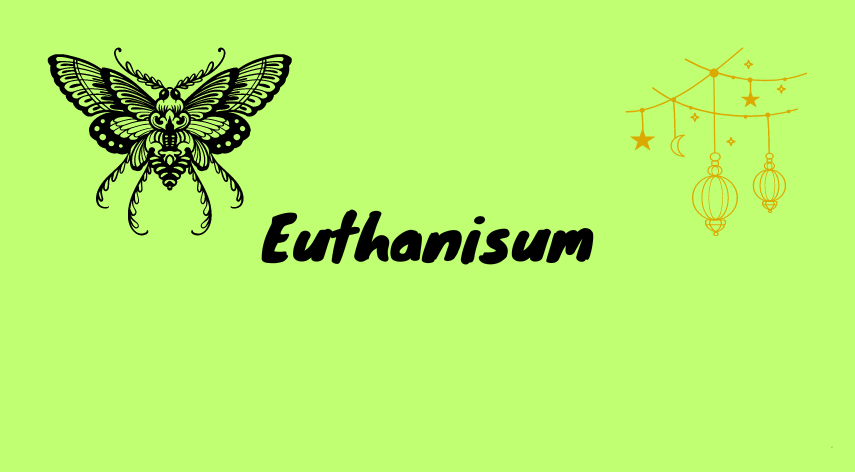
Euthanasia, often referred to as mercy killing, is a highly contentious and emotionally charged topic. It involves the intentional ending of a person’s life to relieve pain and suffering. The word “euthanasia” originates from the Greek words “eu” meaning good and “thanatos” meaning death, translating to “good death.” The debate over euthanasia encompasses ethical, legal, medical, and personal dimensions, making it a critical issue for modern society.
Types of Euthanasia
Voluntary Euthanasia
Voluntary euthanasia occurs when a competent person makes a voluntary and informed request to end their own life. This type is often associated with patients suffering from terminal illnesses who wish to avoid prolonged pain and suffering.
Involuntary Euthanasia
Involuntary euthanasia happens when euthanasia is performed without the explicit consent of the individual. This type is generally considered unethical and is equated with murder, as it is done against the person’s will.
Non-Voluntary Euthanasia
Non-voluntary euthanasia is carried out when the person is unable to consent, such as in cases involving patients in a persistent vegetative state or severe infants with congenital disabilities. Decisions in such cases are typically made by family members or medical practitioners.
Methods of Euthanasia
Passive Euthanasia
Passive euthanasia involves withholding or withdrawing life-sustaining treatments, allowing the person to die naturally. Examples include disconnecting a ventilator or halting nutrition and hydration.
Active Euthanasia
Active euthanasia involves directly causing the death of a patient through the administration of lethal substances or other interventions. This method is more controversial and often subject to legal restrictions.
Ethical Perspectives
Arguments for Euthanasia
Proponents argue that euthanasia allows individuals to die with dignity, relieving unbearable pain and suffering. They emphasize patient autonomy and the right to choose one’s destiny, including the manner and timing of death.
Arguments against Euthanasia
Opponents contend that euthanasia undermines the sanctity of life and can lead to a slippery slope where the value of human life is diminished. They also worry about potential abuses and the pressure it might place on vulnerable individuals to end their lives prematurely.
Legal Perspectives
Countries Where Euthanasia is Legal
Euthanasia is legal in several countries, including the Netherlands, Belgium, and Canada. Each of these countries has established strict guidelines and protocols to regulate the practice.
Legal Cases and Precedents
Landmark cases, such as those involving Dr. Jack Kevorkian in the United States, have significantly shaped the legal landscape of euthanasia. These cases often highlight the complex interplay between legal rights and ethical considerations.
Euthanasia Laws Around the World
Euthanasia laws vary widely, with some countries adopting permissive stances and others maintaining strict prohibitions. Understanding these differences is crucial for global discussions on the topic.
Religious Perspectives
Christian Views on Euthanasia
Christian denominations generally oppose euthanasia, emphasizing the sanctity of life and the belief that only God has the authority to end human life.
Islamic Views on Euthanasia
Islamic teachings also prohibit euthanasia, considering it a form of suicide, which is forbidden. Life is viewed as a sacred trust from Allah.
Hindu Views on Euthanasia
Hinduism’s views on euthanasia are diverse, with some interpretations accepting it in cases of extreme suffering, while others strongly oppose it due to the belief in karma and the cycle of rebirth.
Buddhist Views on Euthanasia
Buddhism generally opposes euthanasia, as it contradicts the principle of non-harming. However, perspectives can vary, emphasizing compassion and the alleviation of suffering.
Euthanasia in Medicine
Role of Medical Professionals
Medical professionals play a crucial role in euthanasia, from assessing patient eligibility to administering the procedure. Their ethical obligations and personal beliefs can significantly influence their stance on the issue.
Palliative Care vs. Euthanasia
Palliative care focuses on providing relief from the symptoms and stress of serious illness. It aims to improve the quality of life without hastening death, offering an alternative to euthanasia for many patients.
Patient Autonomy and Informed Consent
Patient autonomy and informed consent are fundamental principles in medical ethics. Ensuring that patients make fully informed decisions about euthanasia is vital to respecting their rights and dignity.
Psychological Perspectives
Impact on Patients
Euthanasia can significantly impact patients’ mental and emotional well-being. The decision to end one’s life is profound, often accompanied by complex feelings of relief, fear, and resignation.
Impact on Families
Families of individuals who choose euthanasia may experience a range of emotions, from grief and loss to relief and acceptance. The process can strain family dynamics and necessitate support systems.
Impact on Healthcare Providers
Healthcare providers involved in euthanasia may face moral and emotional challenges. They must balance their professional responsibilities with their personal beliefs and the ethical implications of their actions.
Societal Perspectives
Public Opinion on Euthanasia
Public opinion on euthanasia varies widely, influenced by cultural, religious, and personal beliefs. Polls and surveys can provide insights into societal attitudes and trends.
Media Representation of Euthanasia
Media portrayal of euthanasia shapes public perception and debate. Stories in films, news, and literature can influence opinions and highlight the complexities of the issue.
Euthanasia and Disability Rights
Euthanasia intersects with disability rights, raising concerns about the value placed on the lives of disabled individuals and the potential for discriminatory practices.
Case Studies
Famous Euthanasia Cases
Notable euthanasia cases, such as those of Brittany Maynard and Tony Nicklinson, have garnered widespread attention and sparked international debate on the ethics and legality of the practice.
Lessons Learned from Case Studies
Examining these cases can provide valuable insights into the practical and ethical challenges of euthanasia, helping to inform future policies and practices.
Alternatives to Euthanasia
Palliative Care
Palliative care offers comprehensive support for patients with serious illnesses, addressing physical, emotional, and spiritual needs to improve their quality of life.
Hospice Care
Hospice care provides specialized support for terminally ill patients, focusing on comfort and quality of life rather than curative treatment.
Pain Management Techniques
Advancements in pain management techniques, such as medication, therapy, and holistic approaches, can alleviate suffering and reduce the perceived need for euthanasia.
Future of Euthanasia
Technological Advances
Emerging technologies, such as improved pain management devices and innovative therapies, may influence the future landscape of euthanasia and end-of-life care.
Changing Legal Landscapes
Legal developments and court rulings will continue to shape the regulation and practice of euthanasia worldwide, reflecting evolving societal values and ethical considerations.
Societal Attitudes
As societal attitudes towards death and dying evolve, the discourse around euthanasia will likely shift, potentially leading to new norms and practices.





